In today’s fast-paced world, creating a home that works smarter — not harder — has become more than just a luxury; it’s a necessity. Thanks to the rapid advancement of the Internet of Things (IoT), homeowners are transforming everyday living spaces into interconnected, intelligent environments. But what exactly are IoT devices, and how can they enhance your lifestyle? This ultimate guide will walk you through everything you need to know about IoT devices for your home — from must-have gadgets to setup tips, security considerations, and future trends.
What is IoT and Why Should You Care?
The Internet of Things (IoT) refers to the network of physical devices embedded with sensors, software, and connectivity, allowing them to communicate and interact over the internet. In the context of your home, IoT devices enable automation, remote control, and real-time monitoring — making daily routines effortless and efficient.
Imagine waking up to a coffee machine that starts brewing at your voice command, lights that adjust based on natural sunlight, and a thermostat that learns your schedule to optimize energy usage. This is the promise of IoT: a seamless blend of convenience, security, and sustainability.
Top 10 IoT Devices That Will Transform Your Home
1. Smart Thermostats
These devices learn your habits and adjust heating and cooling automatically to save energy and keep you comfortable.
2. Smart Lighting Systems
Control brightness, color, and scheduling of your lights from anywhere using your phone or voice assistant.
3. Smart Security Cameras
Keep an eye on your home remotely with real-time alerts, motion detection, and two-way communication.
4. Smart Locks
Forget about keys — use your smartphone or voice commands to lock and unlock your doors securely.
5. Voice Assistants & Smart Speakers
Central hubs for controlling other smart devices and accessing information hands-free.
6. Smart Plugs & Outlets
Turn any regular device into a smart device by controlling its power supply remotely.
7. Smart Smoke and Carbon Monoxide Detectors
Get instant alerts and automated safety responses to protect your home and loved ones.
8. Smart Appliances
From refrigerators that track groceries to washing machines you can start remotely — the kitchen and laundry rooms are getting smarter.
9. Smart Sensors
Motion, light, humidity, and water leak sensors help monitor your home environment and trigger automations.
10. Home Automation Hubs
Devices that connect all your smart gadgets under one platform for unified control and complex automation routines.
How to Choose the Right IoT Devices for Your Home
When selecting IoT devices, consider:
-
Compatibility: Ensure devices work with your preferred ecosystem (Alexa, Google, Apple HomeKit)
-
Security: Look for strong encryption and regular software updates
-
Ease of Use: Intuitive apps and voice control options make daily use hassle-free
-
Energy Efficiency: Devices that save energy contribute to lower bills and environmental benefits
Setting Up Your IoT Devices: A Step-by-Step Guide
Step 1: Establish a Robust Home Network
Your smart home’s foundation is a stable and secure Wi-Fi network. Consider upgrading to a dual-band or mesh router to ensure strong coverage in every corner.
-
Tip: Change your default router password and enable WPA3 encryption to protect your network from intruders.
Step 2: Choose Your Smart Home Ecosystem
Decide whether you want to build your smart home around Amazon Alexa, Google Assistant, or Apple HomeKit. Each ecosystem has its strengths and compatible devices.
-
Alexa: Wide device compatibility and extensive skills library.
-
Google Assistant: Superior natural language processing and seamless Google service integration.
-
Apple HomeKit: Strong focus on privacy and security with intuitive app control.
Step 3: Start With Core Devices
Begin by installing essential devices like a smart thermostat or smart lighting system. Follow manufacturer instructions for connecting them to your Wi-Fi network and ecosystem app.
Step 4: Customize Automation Routines
Use your smart home app to create automation scenarios. For example:
-
Automatically turn off lights when no movement is detected for 10 minutes.
-
Adjust thermostat settings based on your daily schedule.
-
Receive alerts if a door is unlocked unexpectedly.
Step 5: Expand Gradually
Add smart plugs, cameras, sensors, and other devices as needed. Test compatibility and adjust automation rules to create a fully integrated system.
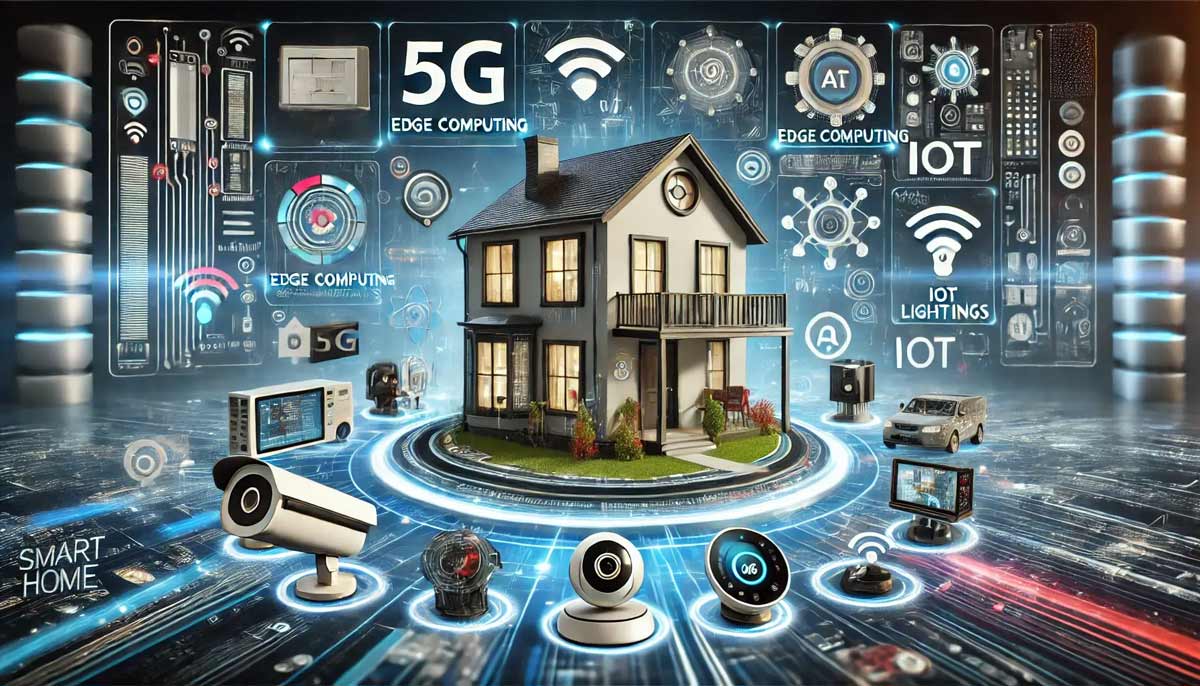
Market-Research-Growth-and-Trends-in-Smart-Home-Automation-DM-WebSoft-LLP-(1)
Smart Home Security: Keeping Your Connected Life Safe
IoT devices bring convenience, but they also increase your attack surface. Follow these security best practices:
-
Regularly update device firmware.
-
Use strong, unique passwords for each device.
-
Enable two-factor authentication where available.
-
Segment your IoT devices on a separate guest network.
-
Disable unnecessary features and services.
Real-Life Examples: How IoT Devices Enhance Daily Life
Example 1: Energy Savings With Smart Thermostats
Jane installed a smart thermostat that learned her routine and lowered the temperature when she was away. Over one year, she saved 15% on her energy bill.
Example 2: Increased Safety With Smart Cameras and Locks
Mark uses smart cameras with motion detection and smart locks linked to his phone. He receives instant alerts if unusual activity is detected and can remotely lock the doors if needed.
Cost Considerations: What to Expect
| Device Type | Average Cost Range | Installation Complexity | Typical Savings/Benefits |
|---|---|---|---|
| Smart Thermostat | $100 – $300 | Easy | Up to 15% annual energy savings |
| Smart Lighting System | $15 – $50 per bulb | Easy | Energy savings, mood lighting |
| Smart Security Camera | $50 – $250 | Moderate | Enhanced home security, remote monitoring |
| Smart Locks | $100 – $300 | Moderate | Keyless entry, improved security |
Setting Up Your Smart Home: The Definitive Step-by-Step Process
Step 1: Optimize Your Home Network for IoT Success
A fast, reliable Wi-Fi network is the backbone of your smart home. Consider these pro tips:
-
Upgrade to a mesh Wi-Fi system like Google Nest WiFi or Eero for blanket coverage and zero dead zones.
-
Enable WPA3 encryption for cutting-edge network security — protecting your IoT devices from cyber threats.
-
Assign a dedicated SSID and password specifically for IoT devices, isolating them from sensitive personal data traffic.
CTA: Check your internet speed now and upgrade your router if it’s below 100 Mbps — smart devices demand speed!
Step 2: Select Your Ecosystem: Alexa vs Google Assistant vs Apple HomeKit
The smart home ecosystem shapes your experience. Compare:
| Ecosystem | Key Benefits | Compatible Devices | Privacy & Security Focus |
|---|---|---|---|
| Amazon Alexa | Massive third-party integrations, affordable devices | Echo speakers, Ring cameras, Philips Hue bulbs | Moderate, with many voice data stored |
| Google Assistant | Superior natural language AI, smart routines | Nest products, Chromecast, smart plugs | Strong data controls, Google integration |
| Apple HomeKit | Tight privacy, encrypted communication | HomePod, Ecobee, August locks | High emphasis on user privacy |
CTA: Choose the ecosystem that matches your lifestyle and existing devices. Mix-and-match cautiously!
Step 3: Start Small — Essential Devices to Kick Off Your Smart Home Journey
-
Smart Thermostat: Automate heating/cooling, reduce energy bills, control remotely. (Example: Nest Learning Thermostat)
-
Smart Lighting: Dimmable, color-changing bulbs, schedule or voice control. (Example: Philips Hue)
-
Smart Security: Cameras and smart locks for real-time monitoring and access control. (Example: Ring Video Doorbell, August Smart Lock)
Pro Tip: Begin with devices that provide immediate value, then scale up for full home automation.
Automation Best Practices: Crafting Routines That Work for You
Automations transform your home into a responsive living environment. Examples include:
-
“Good Morning” Routine: Lights gradually brighten, coffee maker starts, thermostat adjusts to wake-up temperature.
-
Away Mode: Locks doors, lowers thermostat, turns off lights, arms security cameras.
-
Energy Saver: Turns off devices after inactivity, dims lights in unused rooms.
How to create: Use your ecosystem’s app (Alexa Routines, Google Home, or Apple Shortcuts) to customize triggers based on time, location, or sensor data.
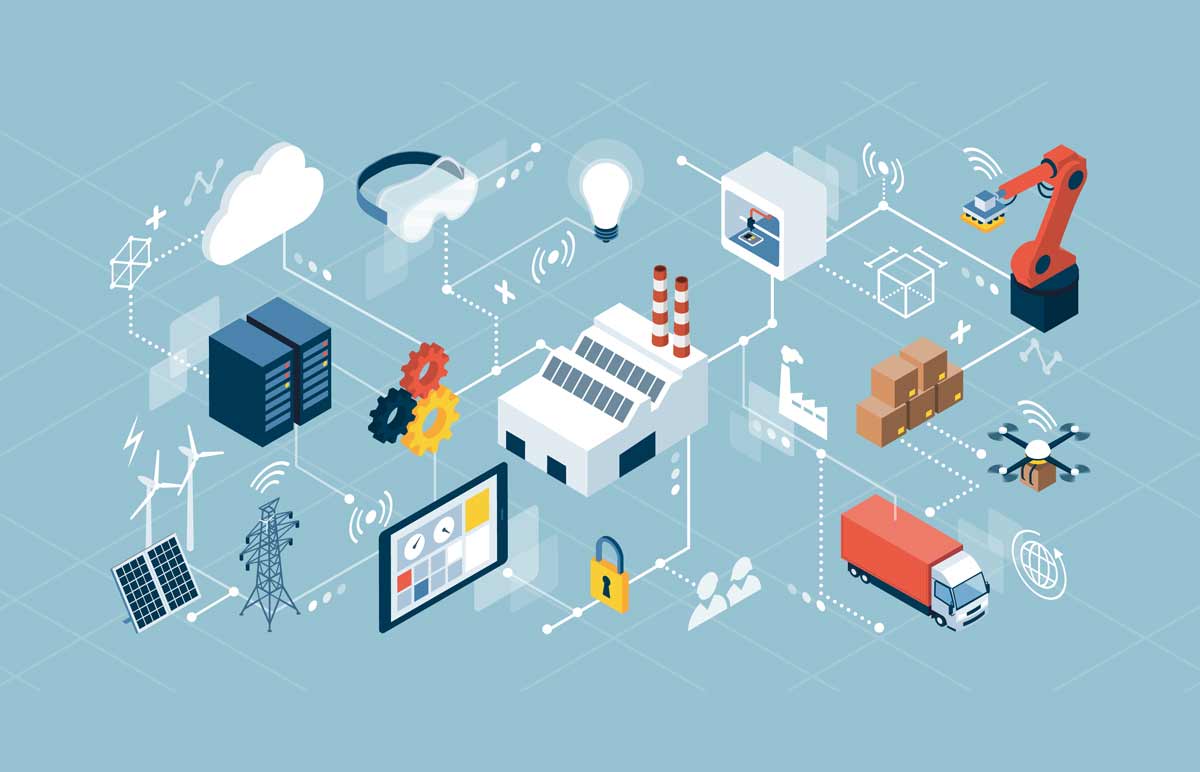
IOT-primera
Security First: Protect Your Smart Home and Privacy
Smart homes are vulnerable to hacking without proper precautions:
-
Firmware Updates: Always update devices promptly to patch vulnerabilities.
-
Strong Passwords: Use unique, complex passwords; consider a password manager.
-
Two-Factor Authentication: Enable on all accounts linked to your smart home devices.
-
Network Segmentation: Use guest networks for IoT devices to isolate them from your main devices.
-
Regular Audits: Periodically review device permissions and connected apps.
Cost-Benefit Analysis: What You Need to Know
| Device | Price Range | Installation Difficulty | Potential Savings/Value |
|---|---|---|---|
| Smart Thermostat | $120 – $350 | Easy | Energy savings 10-15%, remote control |
| Smart Lighting | $20 – $60 per bulb | Easy | Up to 40% energy savings on lighting |
| Smart Security Camera | $80 – $300 | Moderate | Enhanced security, potential insurance discounts |
| Smart Locks | $150 – $350 | Moderate | Convenience, remote locking, keyless access |
| Smart Plugs | $15 – $35 each | Very easy | Control appliances remotely, energy monitoring |
CTA: Budget smart — prioritize devices that deliver both convenience and cost savings first.
Real-World Success Stories: Smart Home Transformation Examples
-
Sarah in Austin: Installed a full smart lighting system with motion sensors and Alexa control — reduced her monthly electric bill by 30% in six months.
-
David in New York: Secured his apartment with Ring cameras and August smart locks — remotely grants access to guests and cleaners without sharing keys.
-
Maria in Seattle: Uses smart plugs and thermostat automation to minimize energy waste, especially during working hours, saving $200 annually.
What’s Next? Future-Proof Your Smart Home
To ensure your smart home keeps pace with innovations:
-
Choose devices supporting Matter, the new interoperability standard to unify smart home control.
-
Opt for voice assistants with evolving AI for smarter routines.
-
Monitor emerging tech like AI-powered home health monitoring and predictive energy management.
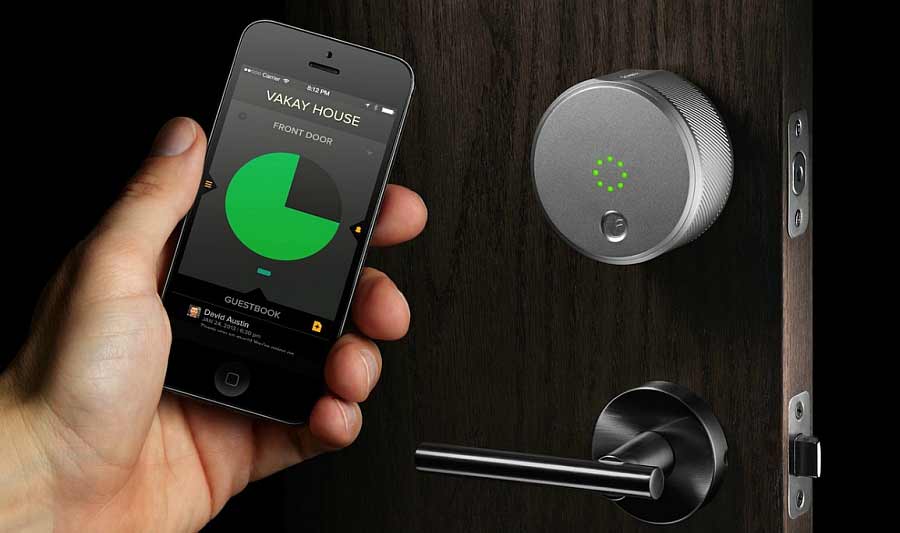
August-Smart-lock-has-a-sleek-and-easy-interface
Advanced Integrations, Troubleshooting, and Expert Recommendations
Advanced Device Integrations: Seamless Smart Home Ecosystems
Once you have your essentials set up, it’s time to build a smart home ecosystem where devices communicate and work in harmony. This interoperability unlocks true automation power.
Key strategies for integration:
-
Use a centralized smart home hub or platform:
Devices from different manufacturers can be unified via hubs like Samsung SmartThings, Hubitat Elevation, or software platforms such as Home Assistant. These hubs support hundreds of devices and protocols (Zigbee, Z-Wave, Wi-Fi). -
Leverage voice assistant routines:
Create complex, multi-device sequences triggered by voice commands or schedules. For example, a single “Goodnight” command could lock doors, lower thermostat, turn off all lights, and arm security. -
Connect sensors to multiple systems:
Use motion sensors or door/window sensors to trigger alarms, lights, and cameras simultaneously, increasing both convenience and security. -
IFTTT (If This Then That):
A powerful web-based automation service to link unsupported devices or services. For example, set your smart lights to flash if your security camera detects motion.
| Integration Tool | Compatible Protocols/Devices | Best Use Cases | Cost Range |
|---|---|---|---|
| Samsung SmartThings | Zigbee, Z-Wave, Wi-Fi, cloud services | All-in-one home automation hub | $70–$130 |
| Hubitat Elevation | Zigbee, Z-Wave, LAN | Local control with minimal cloud dependency | $130–$150 |
| Home Assistant | Open-source, Wi-Fi, Zigbee, Z-Wave | Highly customizable DIY automation | Free software, hardware varies |
| IFTTT | Cloud-based | Cross-platform automation, cloud triggers | Free – $10/month |
Troubleshooting Common Smart Home Challenges
Smart homes can be complex; here are solutions to typical issues:
| Problem | Cause | Solution |
|---|---|---|
| Devices not responding | Wi-Fi interference or weak signal | Reboot router, switch to 5GHz Wi-Fi, add mesh nodes |
| Devices drop offline | Firmware outdated | Update device software regularly |
| Automation routines fail | Conflicting commands or outdated apps | Recheck routine triggers and update apps |
| Voice assistant misunderstandings | Poor microphone placement or noisy environment | Place device in quieter area, retrain voice model |
| Security concerns | Default passwords, unsecured networks | Change default credentials, enable 2FA, segment networks |
Expert Recommendations: Choosing the Best IoT Devices in 2025
-
Smart Thermostats: Look for adaptive AI that learns your preferences and integrates with weather forecasts (e.g., Ecobee SmartThermostat).
-
Security Cameras: Opt for cloud storage with end-to-end encryption and facial recognition capabilities (e.g., Arlo Ultra 4K).
-
Smart Lighting: Prioritize bulbs with circadian rhythm settings to support natural sleep patterns (e.g., LIFX Clean).
-
Smart Locks: Choose locks with auto-lock and remote access via encrypted apps (e.g., Yale Assure Lock SL).
-
Smart Plugs: Use smart plugs with energy monitoring features to track usage and reduce waste (e.g., TP-Link Kasa Smart Plug).
Cost Comparison of Popular Smart Home Devices (2025 Market)
| Device Type | Brand/Model | Approximate Cost | Key Features | Warranty |
|---|---|---|---|---|
| Smart Thermostat | Ecobee SmartThermostat | $249 | Voice control, AI learning, weather integration | 3 years |
| Security Camera | Arlo Ultra 4K | $399 | 4K video, night vision, encrypted cloud storage | 1 year |
| Smart Lighting | LIFX Clean | $50 per bulb | Circadian lighting, app control, voice compatible | 2 years |
| Smart Lock | Yale Assure Lock SL | $230 | Keyless entry, auto-lock, remote access | 1 year |
| Smart Plug | TP-Link Kasa HS110 | $25 | Energy monitoring, scheduling | 1 year |
How to Expand Your Smart Home Network Safely
-
Plan your device count: Overloading your Wi-Fi or hub can cause lag or device drop-offs. Generally, keep under 50 devices per home network segment.
-
Use wired backhaul when possible: For mesh systems, wired Ethernet between nodes increases speed and reliability.
-
Backup your smart home setup: Regularly export configuration settings and store passwords securely to recover from failures.
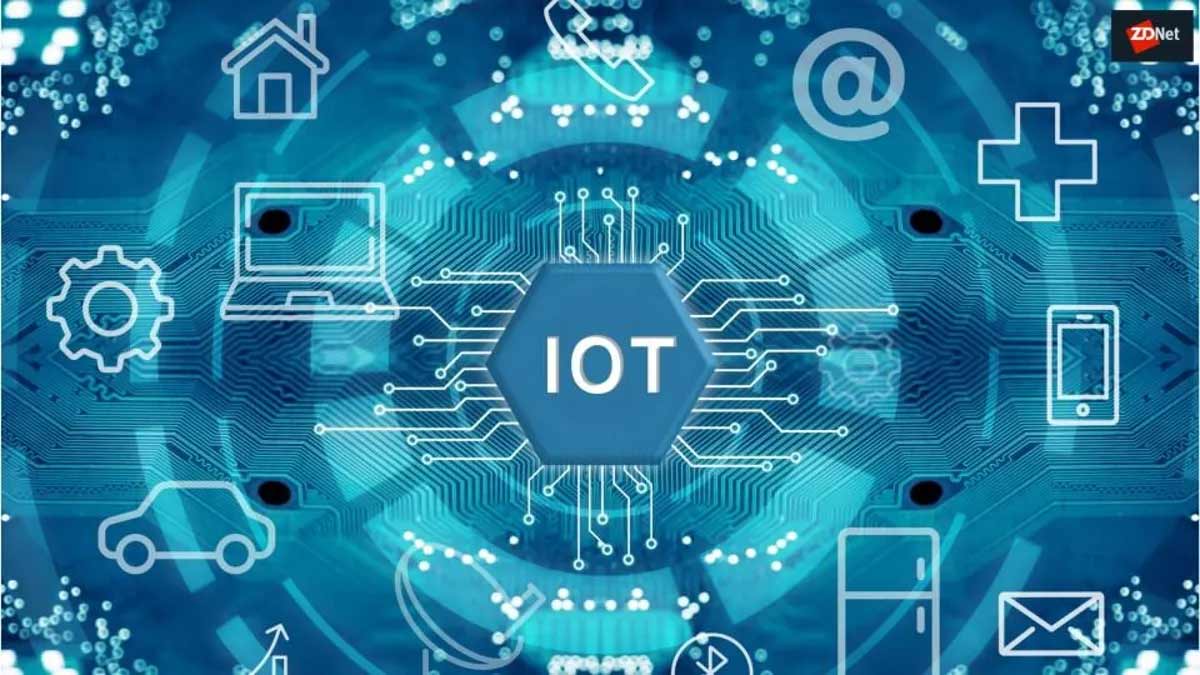
What is IOT
What to Do Next: Smart Home Checklist
-
Audit your current devices and network capabilities.
-
Select a centralized hub or platform to unify control.
-
Invest in high-quality, secure routers and mesh systems.
-
Create simple automation routines and test functionality.
-
Schedule regular firmware updates and security reviews.
-
Keep an eye on emerging IoT standards like Matter for future-proofing.
Future Trends, Sustainability, and Expert Case Studies
The Future of Smart Homes: What to Expect (2025–2030)
The smart home landscape is evolving rapidly. Key trends shaping the next five years include:
-
Matter Standard Adoption: A universal protocol for device interoperability, enabling seamless integration across ecosystems (Amazon Alexa, Google, Apple HomeKit).
-
AI-Driven Automation: Smarter assistants predicting needs, adjusting home environments proactively based on behavior, health, and weather patterns.
-
Edge Computing: More processing power on devices themselves for faster responses, enhanced privacy, and reduced cloud dependency.
-
Augmented Reality (AR) Interfaces: Visualize and control your home with AR glasses or phone overlays, making device management intuitive.
-
Energy Harvesting IoT Devices: Sensors powered by solar or kinetic energy to reduce maintenance and environmental impact.
Smart Homes & Sustainability: IoT for a Greener Planet
IoT is a powerful ally for eco-friendly living:
| Eco-Friendly Feature | Impact | Example Devices |
|---|---|---|
| Energy Monitoring & Management | Reduce electricity waste by 15–30% | Sense Energy Monitor, Tesla Powerwall |
| Smart Thermostats | Efficient heating/cooling schedules | Nest Learning Thermostat |
| Automated Lighting Control | Lights off when rooms empty | Philips Hue Motion Sensor |
| Water Usage Sensors | Detect leaks and optimize consumption | Flume Water Monitor |
| Solar-Powered Devices | Lower battery waste, energy self-sufficiency | Sunflower Labs Sensor |
Tip: Combining IoT with renewable energy solutions maximizes home efficiency and reduces carbon footprint.
Real-World Smart Home Case Studies
Case Study 1: The Johnson Family, Portland, OR
Installed a full smart ecosystem integrating thermostats, lighting, security, and energy monitoring. Result: 25% reduction in energy bills, 50% fewer security incidents, improved daily comfort.
Case Study 2: Emily, a Single Professional in Chicago
Uses voice-controlled smart plugs and robotic vacuums for convenience, and smart blinds synced to sunlight patterns. This setup saved her 10 hours per week on chores and lowered energy use by 18%.
Case Study 3: The Martinez Residence, Austin, TX
Focused on accessibility with IoT door locks, motion sensors, and emergency alert systems for elderly care. Enabled safe, independent living with remote monitoring, increasing peace of mind.
Installation and Setup Checklist for a Seamless Smart Home Experience
| Step | Task | Tips & Recommendations |
|---|---|---|
| 1. Assess Needs | Identify what you want to automate | Prioritize comfort, security, and energy use |
| 2. Choose Hub | Select a compatible smart home hub | Matter-compatible hubs ensure wider device support |
| 3. Network Setup | Ensure robust Wi-Fi coverage | Use mesh routers for large homes |
| 4. Device Selection | Pick IoT devices fitting your needs | Look for devices with good reviews and security features |
| 5. Install Devices | Follow manufacturer instructions | Place sensors where they capture best data |
| 6. Configure Automation | Create routines/scenes for daily tasks | Use app guides or voice assistants |
| 7. Security Setup | Change default passwords, enable 2FA | Regular firmware updates keep your system secure |
| 8. Test Everything | Verify device responsiveness and routines | Monitor performance over the first week |
| 9. Optimize Settings | Adjust based on lifestyle and feedback | Use usage data to refine schedules |
| 10. Plan for Expansion | Keep room for adding devices later | Future-proof with hubs that support new standards |
This guide is crafted to empower you to build a smarter, more efficient, and eco-friendly home with the latest IoT innovations — making life easier, greener, and more connected.
Building a Smarter Life: The Ultimate Guide to IoT Devices for Your Home (Continued)
Choosing the Right IoT Devices for Your Lifestyle
To build a truly smart home, it’s crucial to select devices that align perfectly with your daily routine and personal needs. Here’s a breakdown of essential IoT categories and what to consider in each:
| Device Category | Purpose | Key Features to Look For | Average Cost Range (USD) |
|---|---|---|---|
| Smart Hubs & Controllers | Centralized control of your IoT ecosystem | Multi-protocol support (Wi-Fi, Zigbee, Z-Wave), voice assistant integration | $80 – $300 |
| Smart Lighting | Energy-efficient lighting & mood setting | Dimmable, color changing, scheduling | $15 – $100 per bulb |
| Smart Thermostats | Automated climate control | Learning capabilities, remote control, energy reports | $100 – $300 |
| Security Systems | Home safety & monitoring | Motion sensors, cameras, alerts, integration with police dispatch | $150 – $500+ |
| Smart Appliances | Convenience in kitchen & cleaning | Remote start/stop, status notifications | $200 – $1500+ |
| Environmental Sensors | Monitor air quality, humidity, leaks | Real-time alerts, integration with HVAC | $30 – $150 |
| Voice Assistants | Hands-free control and information | Wide compatibility, natural language support | $50 – $150 |
| Smart Locks & Doorbells | Access control & visitor management | Keyless entry, video feed, guest codes | $100 – $300 |
By investing in devices that speak the same “language” and support open standards like Matter, you future-proof your smart home and avoid vendor lock-in.
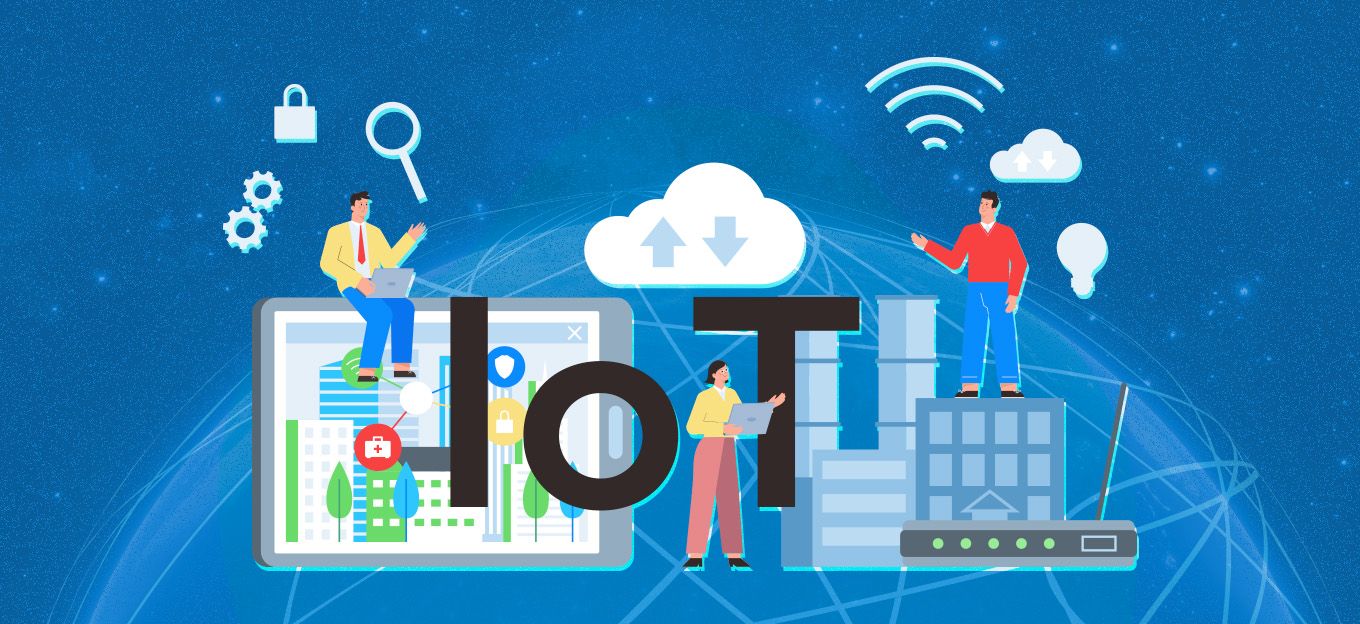
Top 11 Reasons IoT Will Revolutionize Your Daily Life in 2025
How to Ensure Privacy and Security in Your Smart Home
With increased connectivity comes greater risk — securing your smart home is non-negotiable. Follow these expert tips:
-
Change default passwords immediately on all devices.
-
Use strong, unique passwords and consider a password manager.
-
Enable two-factor authentication (2FA) wherever possible.
-
Keep firmware and apps updated to patch vulnerabilities.
-
Create a dedicated IoT network on your router, separate from devices with sensitive information.
-
Review device permissions and data-sharing policies.
-
Disable unused features like remote access if unnecessary.
By prioritizing security from the start, you protect your privacy and ensure your smart home runs safely.
Integrating Voice Control Seamlessly
Voice assistants like Amazon Alexa, Google Assistant, and Apple Siri provide effortless control over your smart home devices. To maximize voice control benefits:
-
Choose a hub compatible with multiple voice assistants if you want flexibility.
-
Use clear, consistent voice commands tailored to your routines.
-
Explore voice routines or shortcuts to automate complex actions (e.g., “Good night” turns off lights, locks doors, adjusts thermostat).
-
Remember to manage voice data privacy through your assistant’s settings to protect your conversations.
Real-World Examples of IoT Home Automation
-
Morning Routine Automation
When your morning alarm goes off, your smart thermostat begins warming the house, smart blinds raise to let in natural light, and your coffee maker starts brewing—all triggered automatically by your wake-up command or schedule. -
Energy Saving Mode
When the last person leaves home, your security system arms, lights turn off, smart plugs shut down unnecessary appliances, and your thermostat adjusts to eco mode, significantly reducing your energy bill. -
Guest Mode Activation
Planning visitors? With a single voice command or app tap, your smart locks generate temporary access codes, smart speakers play a welcome playlist, and smart lighting adjusts for optimal ambiance.
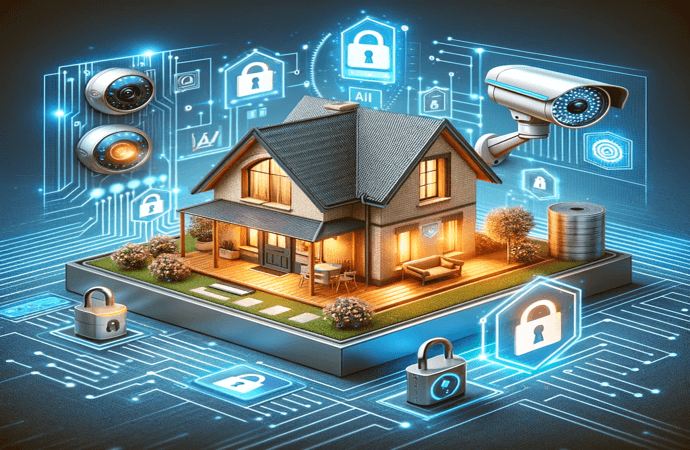
Living Connected: How IoT Is Weaving Itself Into Every Corner of Our Lives
Future Trends in Smart Home Devices to Watch
-
AI-Powered Predictive Automation: Devices that learn from your habits and optimize themselves without manual input.
-
Expanded Interoperability: Matter and other universal protocols will make multi-brand ecosystems smoother.
-
Sustainability Focus: More devices will monitor and reduce carbon footprint, integrating with renewable energy sources.
-
Enhanced Accessibility: IoT solutions tailored for elderly and differently-abled individuals will grow exponentially.
-
Privacy-First Devices: With growing privacy concerns, expect devices built with end-to-end encryption and local processing.


